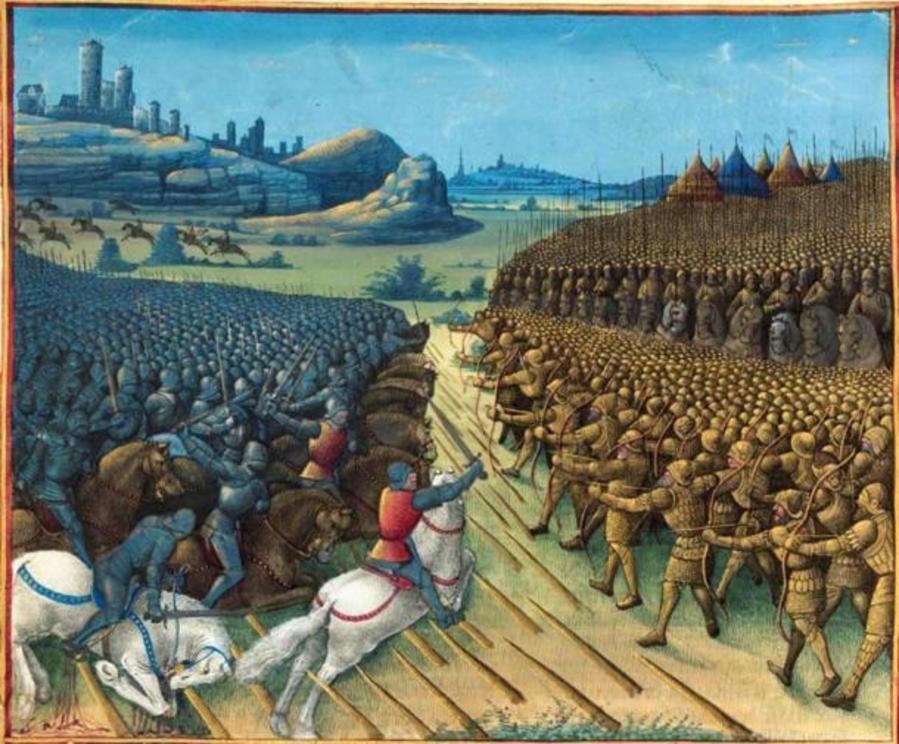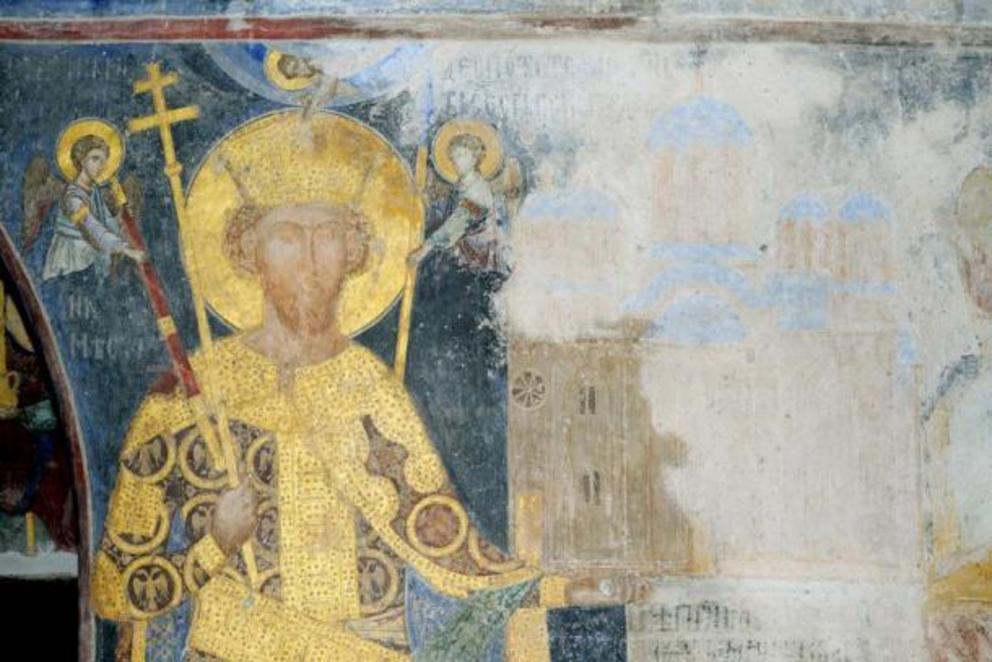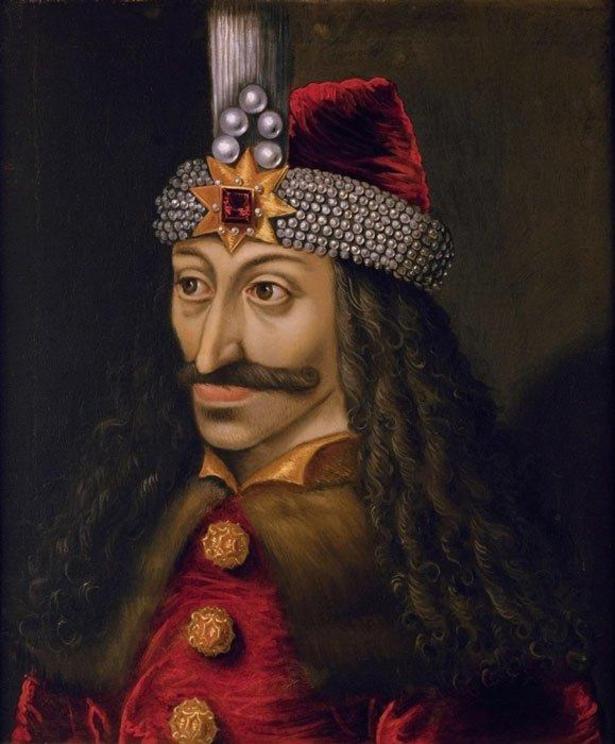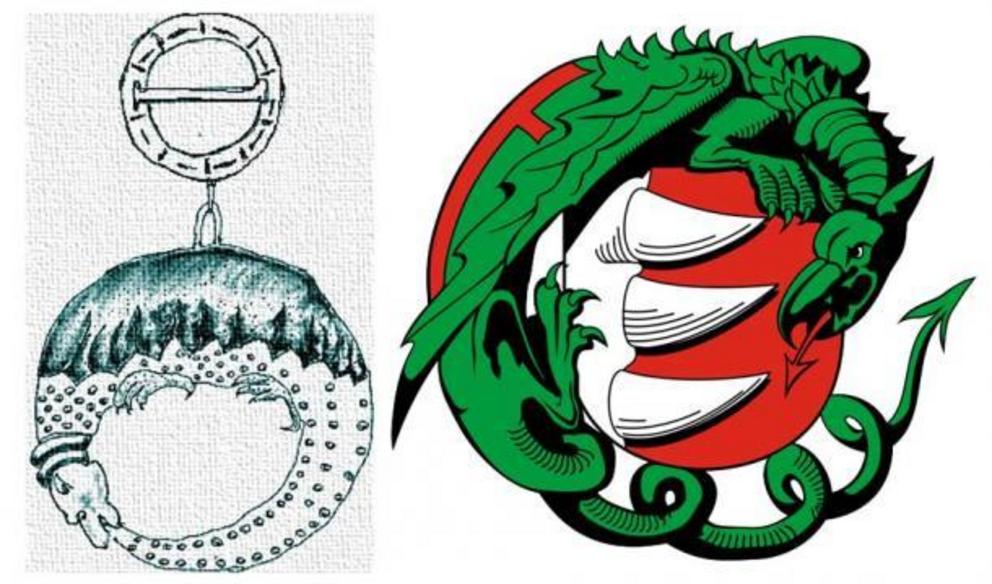The chivalric order of the dragon, the medieval shield of Christendom
Top image: Order of the Dragon
Medieval chivalric orders are the fabled and idealized stuff of legend. Upstanding knights, standing in defense of their faith and of the innocents, with their sophisticated manners and shining suits of armor. For a medieval peasant boy, these chivalrous men were likely the object of utmost admiration. But were they so perfect in reality? The likely truth is that they struggled to thrive and reach the grandeur of past orders, such as the many military movements that were created during the Crusades. The Order of the Dragon was one such prominent chivalric order, reserved only for the leading nobles and rulers of medieval Europe .
 The Chivalric Order of the Dragon was created by Sigismund of Luxembourg, King of Hungary.
The Chivalric Order of the Dragon was created by Sigismund of Luxembourg, King of Hungary.
The Order of the Dragon Was Founded in Dire Times
The key man behind this medieval monarchical chivalric order was Sigismund of Luxembourg, King of Hungary. In 1408 AD, this powerful monarch founded the Societas Draconistarum together with his wife, Barbara of Celje. Today, we know that society by the name of Order of the Dragon, even though its creator named it simply a “society”. Its members were distinguished by a signum draconis - a symbol of the order that was easily recognizable.
At its conception, the Order of the Dragon was modelled after the chivalric military orders that were prominent during the era of the Crusades. These orders were the fabled defenders of Christianity during the tumultuous fight for the reclamation of the Holy Land. By the time of Sigismund of Luxembourg, however, the Crusades were a thing of the past. But the threat against Christianity was still at large.
At the time, Sigismund was King of Hungary, reigning from 1387 to 1437, but later in his life he become the Holy Roman Emperor as well (1433 - 1437), a fact that would contribute immensely to the power of his newly established order. Sigismund created his “society” with the aim of defending the holy cross - i.e. Christianity - and fighting its enemies, the foremost being the Ottoman Turks who were sweeping into Europe at the time.
However, there was a great deal of political background behind the establishment of the order. It was a veritable tool for Sigismund to solidify his rule over the Kingdom of Hungary, which was fragile at best. Sigismund of Luxembourg, son of the Holy Roman Emperor, married Queen Mary of Hungary in 1385 without her consent.
The marriage was strictly a political tool, which made Sigismund King of Hungary and Croatia in one fell swoop. When his wife tragically died in a hunting accident in 1395, he was left with the crown all to himself. However, he had to gain popular support in the court in order to maintain his rule. What is more, Europe - and Hungary - were facing a major encroaching threat from the Ottoman Turks.
 Battle of Nicopolis, which took place in 1396, in a miniature by Jean Colombe.
Battle of Nicopolis, which took place in 1396, in a miniature by Jean Colombe.
The Serbs Are Gloriously Defeated, and Sigismund is Next in Line
In 1389, a fateful battle took place. It was the Battle of Kosovo Polje, in which the entire might of the Serbian medieval nobility assembled in order to face the invading Ottoman Turks. Leaders of both armies were killed in the ensuing engagement and their armies largely destroyed in the process, while the battle was inconclusive. However, on a larger scale, it placed Serbia on its knees, weakening it greatly, and allowing the Ottomans to continue their invasions of Europe.
Just two years later, the Ottomans pressed on, capturing the major Bulgarian fortress of Nicopolis. When Pope Boniface IX announced a crusade against the Turks, Sigismund sought to strengthen his rule and position by taking the nominal charge of the endeavor. Alas, during the ensuing Battle of Nivopolis in 1396, Sigismund’s orders were entirely ignored by the French commander John of Nevers. As a result, the battle ended in utter defeat. A vast majority of the crusaders were killed and their leaders barely escaped with their lives, Sigismund included.
Following this, Sigismund returned to Hungary and began reinforcing his rule in earnest, securing alliances wherever possible. He allied himself with the powerful nobles such as Stibor of Stiboricz, Nicholas II Garay, and Hermann II of Celje, thus gaining their military support with which he was able to quell the rivals that rose against him in Hungary. Furthermore, he married Barbara of Celje, the daughter of Hermann II, furthering their alliance.
In the face of these new threats, and in an effort to raise his power, Sigismund created the Order of the Dragon. To a keen eye, it becomes clear that he did so in order to create strong political affiliations and to ally himself with the leading Christian monarchs. Not only would he then be able to face the Ottoman threat, but would also secure his hold on Hungary and ensure that he was the most powerful regional leader.
All the new members of the order had to swear loyalty to King Sigismund, and to protecting his royal interests. Some historians argue that the order was simply created as an “institution” of the royal Hungarian court. But in simpler terms, we can see that the Order was simply an “alliance” of Europe’s prominent monarchs and aristocrats created to ensure mutual military aid and a coalition against the all-encompassing Ottoman threat.
 Fresco painting of Despot Stefan Lazarevic, member of the Order of the Dragon.
Fresco painting of Despot Stefan Lazarevic, member of the Order of the Dragon.
The Crème de la Crème of European Aristocracy
From its founding, the Order of the Dragon was filled with the most prominent figures of medieval Europe. Sigismund gathered around him the bravest, richest, and most powerful Christian monarchs and nobles, ensuring its prominence from the very start. He started off with 24 European knights and nobles, founding members of the Order of the Dragon. These were by no means ordinary men. They were the Europe’s elite in every sense of the word: men characterized with the highest moral principles, and united by their power and a common Christian faith.
The most powerful of these men - after King Sigismund - was the Serbian ruler, Despot Stefan Lazarević. According to the founding charter of the Order from 1408, Despot Stefan was the first honorable member of the order, and was given an honorable place of “first among equals”, second only to Sigismund. This Serbian monarch was at the time one of the most prominent rulers in Europe. He excelled in the knightly aspects: he was notably tall and muscular; regarded as one of the finest knights and military commanders of his time; was very powerful and rich; and was Sigismund’s closest ally.
Besides Despot Stefan, other founding members included Stibor of Stiboricz of Ostoja, a powerful Polish aristocrat in Hungary and the Duke of Transylvania; Pippo Spano, a Florentian magnate and the close confidant of King Sigismund; Nicholas II Garai, one of the most powerful Hungarian nobles and the palatine (high official) of Sigismund; Frederick II, the powerful Count of Celje; Hermann II, Count of Celje and Sigismund’s father-in-law; Carolus of Krbava, a prominent Croatian noble of the Kurjaković family; and many other prominent figures from the European courts.
From Famed Stefan the Tall to the Legendary Vlad III Dracula
Some of the other prominent members that joined afterwards included Prince Vuk Lazarević, the brother of Despot Stefan; Fruzhin, a renowned warrior and son of the Bulgarian Emperor Ivan Shishman; Alfonso the Magnanimous, King of Aragon; Ferdinand I, King of Naples; Hrvoje Vukčić Hrvatinić, the Ban of Croatia and Grand Duke of Bosnia; and many others.
Amongst the most notable members of the Order was Vlad II Dracul, the Voivode of Wallachia. He was very proud of being the member of the society, going so far to style his emblem with a dragon, and to give himself the nickname Dracul, meaning “the dragon”. His son and heir was also made a member of the society. This was the far more famed Vlad III Dracula, later known as Vlad the Impaler. “ Dracula” means “the son of the Dragon”, i.e Vlad II. It was Vlad the Impaler who would become one of the best known members of the Order of the Dragon, one of the fiercest defenders of Christianity, and a foe of the Ottoman Turks.
Just like the name suggests, the emblem and the coat of arms of the order was a dragon. The emblem depicted a fallen dragon with its tail coiled around its neck, with the shield of Saint George upon its back. This was the fallen dragon bested by Saint George . The statute of the Order, written in 1408, states the following in regards to the emblem:
“...we and the faithful barons and magnates of our kingdom shall bear and have, and do choose and agree to wear and bear, in the manner of society, the sign or effigy of the Dragon incurved into the form of a circle, its tail winding around its neck, divided through the middle of its back along its length from the top of its head right to the tip of its tail, with blood [forming] a red cross flowing out into the interior of the cleft by a white crack, untouched by blood, just as and in the same way that those who fight under the banner of the glorious martyr St. George are accustomed to bear a red cross on a white field …”
Furthermore, the statute of the Order goes in detail to explain the mission and the character of the society. From this surviving passage it is clear that the main goal of the Order was the defense of Christendom against the Turks, heathens, schismatics, and pagans.
“...in company with the prelates, barons, and magnates of our kingdom, whom we invite to participate with us in this party, by reason of the sign and effigy of our pure inclination and intention to crush the pernicious deeds of the same perfidious Enemy, and of the followers of the ancient Dragon, and (as one would expect) of the pagan knights, schismatics, and other nations of the Orthodox faith, and those envious of the Cross of Christ, and of our kingdoms, and of his holy and saving religion of faith, under the banner of the triumphant Cross of Christ …”
 Vlad the Impaler was one of the best known members of the Order of the Dragon.
Vlad the Impaler was one of the best known members of the Order of the Dragon.
A Powerful Political and Military Alliance
Still, if we observe this “mission” from a historic point of view, we can see that Sigismund had a clear intent to create a versatile tool that would help him deal with all the enemies of the Hungarian Kingdom. These included all “anti-Catholic” factions, mainly the Turks. However, this encompassed many political and religious groups within Europe that threatened Catholicism and Sigismund’s Kingdom, both politically and militarily.
There was, for example, the Bosnian “Bogumili” (Bogomils), a supposedly Christian religious group that was persecuted as heretical by the Pope. Before the founding of the Order, Sigismund was actively in conflict with the Croatian and Bosnian nobles. Although the official motto of the Order is not known, it is possible that it went as follows: O Quam Misericors Est Deus, Pius et Justus (“O how merciful is God, Faithful and Just”).
From this motto were derived other variations of the same, such as “Oh, how merciful is God”, or Justus et Paciens (Just and Patient). It is important to note that the original statute from 1408 did not survive. Instead, the oldest known literary document of the society is dated to 1707, which is a copy of the original statute. These documents are stored in the University of Budapest in Hungary.
 Left: Reconstruction of the emblem based on sketches found at the Austrian Museum. Right: Coat of arms of Elizabeth Báthory inspired by the symbols of the Order of the Dragon.
Left: Reconstruction of the emblem based on sketches found at the Austrian Museum. Right: Coat of arms of Elizabeth Báthory inspired by the symbols of the Order of the Dragon.
The Order was Short-lived and Faded Out Fast
The Holy Roman Emperor and King of Hungary, Sigismund of Luxembourg , died in 1437. Following his death, the Order quickly lost prominence. Sigismund’s close ally and the first member of the society, the Serbian Despot Stefan, died ten years before Sigismund - in 1427. Another important member, Vlad II Dracul, died ten years after Sigismund, in 1447. With the loss of other crucial members, and the rapid expansion of the Ottoman Empire, the order lost its political and military value and slowly faded out.
Still, the history of this famous chivalric order shows us how important military and political alliances were in medieval Europe. In the face of the encroaching Turks, King Sigismund used his influence and power to gather around him the most prominent Christian monarchs. Sadly, even together, they could not ensure the survival of Europe or their Order of the Dragon.

